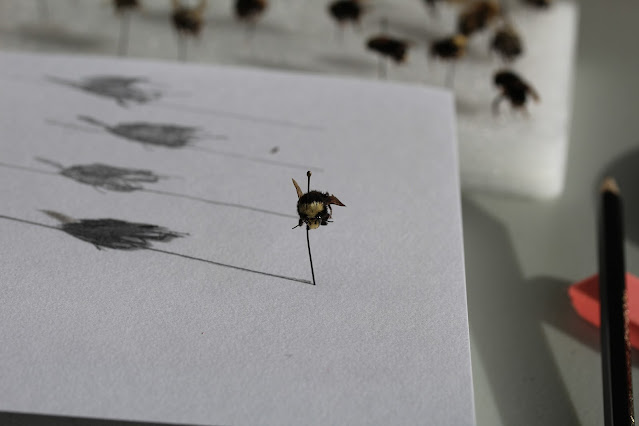I am so excited and grateful to be in Courtenay in this artist residence! What a beautiful, supported place to work! Thank you to the people at the Comox Valley Art Gallery for this wonderful opportunity!
Part of my process every morning has been reading Mary Oliver’s beautiful poem Wild Geese and writing a response as if I was addressing the poet directly. Having just come from a trip, joining photographer Darren Kirby on his cross-Canada trip, following the fall migration of geese across the prairies and British Columbia, it speaks to me quite deeply right now. Sadly, we lost Mary Oliver in 2019.You can hear here reading the poem here. She left behind a legacy of poems that have changed people’s lives. I invite you to look through her collections and engage deeply with the ones that touch your heart.
As an artist, I am always trying to find my place in the “family of things” she speaks of in the poem, the order of things and mourning the ongoing loss of the stability of nature as a consoling, organizing force. Climate change and human intervention threatens the very fabric of nature, and so part of my current artistic process is mourning the degradation of the natural world. I try to focus on the positive things we can do to repair, rewild, and regenerate nature, but at the same time I have to let my body mourn the losses of so much—so much prairie, grasslands, bogs, wetlands, insects, birds, and particularly the bees I have become so fond of over the last decade. Of course, all this ties in to the people I have lost in my life too. They have left big empty spaces in my heart that haunt me every night and day.
Dear Mary
Nov 14
Hunger takes so many forms. Every day it’s different. The body is so demanding I can’t keep up with its needs. This body imagines it inhabits so many other bodies. It always has tried to escape itself. Wild geese, wild swans, wild horses, wild hares or wild foxes curled up in a snowbank or a cave, sheltering from the heart of winter. Which one are you in this moment? What then, Mary? What of the imagined body?
There was a songbird that waited too long to migrate south. She stayed on an icy branch with cold feet, feet so cold she fell off the branch. The shrike pinned her on the barbed wire fence.
Which bird are you, the sparrow or the shrike?
Where is our place in the family of things? Yours and mine?
I have recently been travelling to seek solace in nature, and let it do its work on mending my broken heart. But the process doesn’t have an ending . . . I can see the mending is going to have to continue every day until the rest of my life. Every day I see a new tear in the fabric of nature and the fabric of my soul—a part that needs fixing. It becomes overwhelming. And I know if I am feeling overwhelmed, then the people that are more vulnerable than I am are even more overwhelmed. I am seeking ways to come together to grieve and share the burden of collective grief. How can we support each other in mending and grieving?
What are your daily rituals of mending and grieving?
During my residency I have focused on creating a project that will culminate in one or more events memorializing the worst recorded loss of native bees. June 17, 2023 will mark the tenth anniversary of the Wilsonville Bee Kill, the largest native bee kill ever recorded. This catastrophic loss of an estimated 100, 000 bumble bees occurred when 55 linden trees in bloom in a Target parking lot in Wilsonville, Oregon were sprayed with a neonicatinoid pesticide (brand name Safari), which was being used to kill aphids that were dripping sweet sap onto parked cars. Ten years later, I am interested in revisiting this event and memorializing the bumble bees that were lost, with a community art project.
I’ve started by repeatedly drawing the shadow of a pinned Bombus vosnesenskii bee that I found dead under a linden tree in Vancouver. This repetitive gesture is somewhat comforting, but also it focuses my attention on the troubling issues I want to confront with this new work.
























